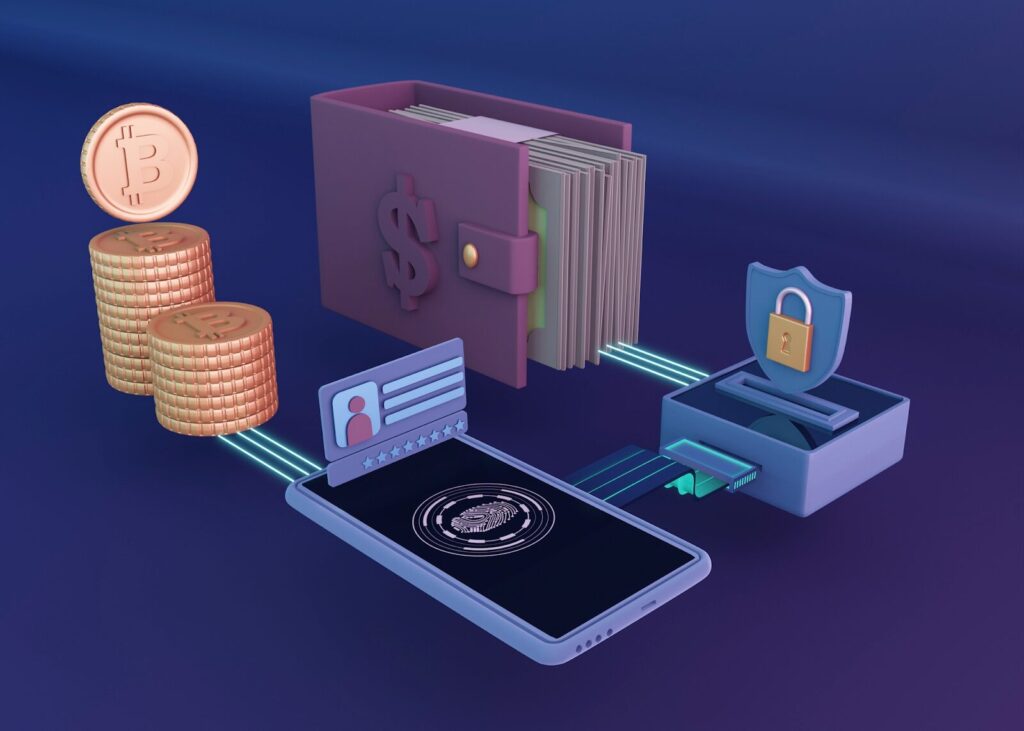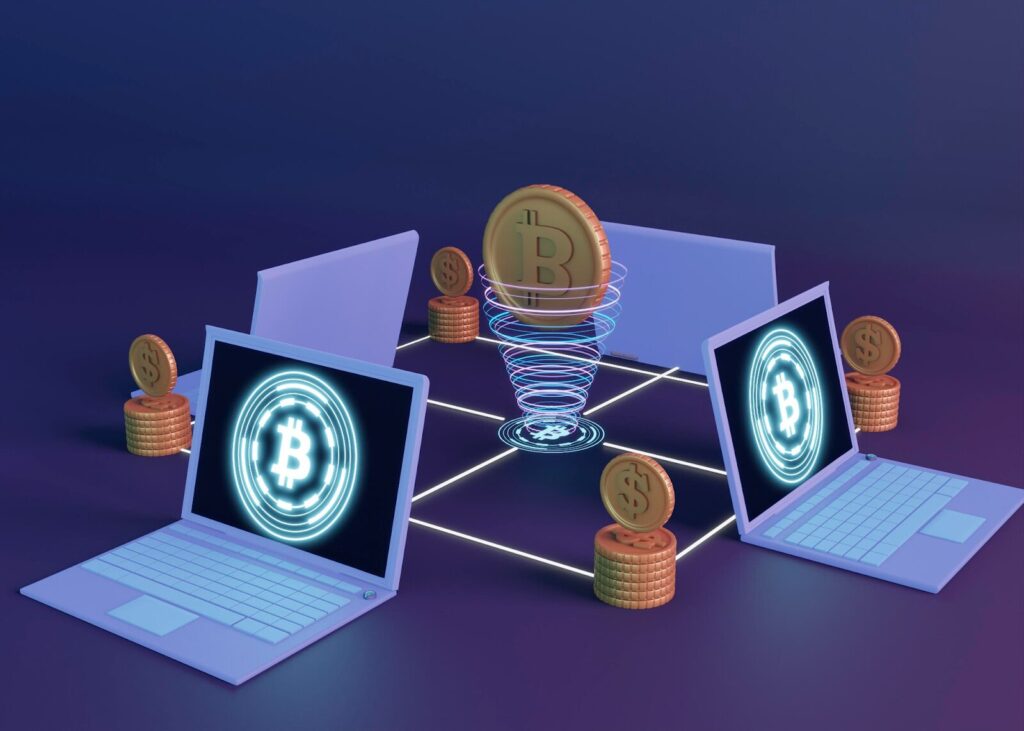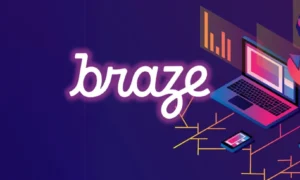The recent disruption of the financial services industry by emerging technologies such as blockchain and cryptoassets has been massive. Traditional finance is also evolving to meet changing consumer demands at the same time. The old and the new are converging, and that’s creating tremendous opportunities for developers who understand how to bring them together.
In this in-depth guide, we’ll explore different areas where traditional finance and blockchain/crypto are colliding, explain critical concepts, and outline what developers need to know about how to build solutions and capture value in this space. Topics covered include:
- How blockchain is transforming financial services
- Opportunities in decentralized finance (DeFi)
- Integrating crypto with traditional banking
- Tokenization of assets
- Payments infrastructure innovation
- Compliance and regulation considerations
With this information in hand, developers have the information they need to strategically position themselves to take advantage of one of the most disruptive and lucrative technology shifts in financial services.
How Blockchain is Transforming Financial Services

Blockchain technology creates a decentralized, distributed digital system that stores and checks transactions openly and safely. Unlike other technologies, this one can be unchanged, cannot be censored, requires little trust and does not need middlemen.
Because of these technical features, blockchain may greatly modify financial market infrastructure and services, especially when paired with a reliable fiat onramp that facilitates user entry into the crypto ecosystem. Key sectors where blockchain is seeing innovation are:
- Payments. Blockchain enables faster cross-border payments and facilitates micropayments at reduced transaction fees.
- Clearance & Settlement. Because digital assets can be shared directly between users on blockchain, trading, clearing, and settlement take less time.
- Identity Management. A digital, self-sovereign identity means the user owns and manages their information.
- Compliance. Regulators can trust immutable audit trails, which also help prevent fraud.
- Smart Contracts. Programmable agreements digitize and automate complex financial transactions.
- Asset Tokenization. Any asset can be represented as a digital token on blockchain, unlocking liquidity.
- Decentralized Finance. Interconnected decentralized applications offer financial services without intermediaries.
With these innovations, efficiencies are being driven, financial access is being broadened, new products and business models are being enabled, and integration with existing legacy systems is possible.
Opportunities in Decentralized Finance
Decentralized finance (DeFi) means financial applications that run on blockchain networks minus the middleman. DeFi, also referred to as open finance, seeks to rebuild traditional financial products in a transparent, interoperable, peer-to-peer fashion using smart contracts.
DeFi offers lending services, derivatives, ways to make payments, asset management and several other functions. At present, over $100 billion is locked in DeFi. Since DeFi uses code as its base, developers are able to use different services in new and exciting ways.
Key opportunities in DeFi for developers include:
- Building lending platforms and interest-generating services
- Enabling users to trade financial assets peer-to-peer
- Creating stablecoins and synthetic assets
- Designing systems for payments and transaction processing
- Developing prediction markets and insurance offerings
- Launching tokenized securities and new fundraising models
- Constructing asset management tools and index funds
- Integrating with off-chain services via oracles
- Improving system interoperability and composability
All DeFi protocol code is publicly available to developers so they can look for weaknesses, suggest upgrades and use them as ideas for future innovations. Rewarding talent is done through tokens that take part in sharing the network’s value.
There are major difficulties for those who want to enter DeFi development, but the benefits for those who do are very high.
Integrating Crypto with Traditional Banking

Major banks see the inevitability of blockchain and are making big bets to integrate digital assets into their existing infrastructure. Areas of focus include custody solutions, retail crypto offerings, institutional blockchain tools, tokenization platforms, and CBDC development.
Custody & Asset Servicing
Banks such as BNY Mellon, State Street, and Standard Chartered are rolling out top-level custody and services for assets and NFTs that cater to institutional investors. The objective is to make digital assets available as an investment choice for funds and managers that want secure, regulated storage.
People with coding skills are required to create a reliable infrastructure for storing both cold and hot crypto, handling policies, checking transactions, providing staking, assisting with governance, and meeting reporting standards.
Developers are needed to build institutional-grade infrastructure for hot and cold storage, policy administration, transaction monitoring, staking services, governance support, regulatory reporting, and more.
Retail Crypto Offerings
Major retail banks plan to allow their millions of customers to buy, sell, and hold cryptocurrencies through their existing accounts.
Product opportunities include integrating crypto wallets with online/mobile banking, designing simplified retail trading platforms, building portfolio dashboards and reporting, creating loyalty rewards programs using crypto, and developing associated compliance tools.
Institutional Blockchain Tools
Banks are introducing blockchain applications focused on trade finance, syndicated lending, handling cross-border payments, and equity swaps.
Developers must design enterprise blockchains that work well for these industries, linking banks’ old systems to new decentralized solutions for settlement, documentation, automation, and data sharing.
Tokenization Platforms
Banks are providing full tokenization platforms so that clients can release digital assets and securities on both public blockchains and private distributed ledgers.
The team requires developers who can handle tokenization, design smart contracts, manage integration of tokenized assets, ensure bank-level security and improve how different systems can work together.
As blockchain permeates banking in these areas, developers can target product opportunities that bridge decentralized innovation with trusted financial institutions.
Tokenization of Assets
One profound impact of blockchain is unlocking liquidity for traditionally illiquid assets through tokenization. Any asset with value, like real estate, private equity, commodities, debt instruments, fine art, etc., can be represented on blockchain as a digital token.
Tokenized assets can be fractionally owned, easing access for retail investors. Programmability unlocks automation around ownership transfer, dividends, governance, etc. And global secondary markets allow 24/7 trading.
Unique token standards are emerging for major asset categories:
- Securities Tokens. Programmable digital securities improve access, automation, and reporting for traditional securities compliance.
- Utility Tokens. Application-specific tokens align incentives between users and providers in blockchain networks.
- Non-Fungible Tokens (NFTs). Non-interchangeable tokens with unique identifications represent ownership of rare/unique assets like collectibles.
- Stablecoins. Fiat-collateralized cryptocurrencies like USDC minimize volatility for practical payments/trading.
Both centralized institutions and blockchain platforms are developing end-to-end tokenization ecosystems – from issuance to secondary trading.
For developers, opportunities include:
- Building token issuance platforms tailored for specific asset classes
- Designing specialized wallets and management apps
- Integrating tokenized assets with existing infrastructure
- Enabling fractionalized ownership and governance mechanisms
- Developing secondary trading platforms and interfaces
- Ensuring compliance requirements are met
- Improving cross-chain interoperability
As tokenization spreads, developers play pivotal roles in shaping next-generation ownership models improving access, liquidity and automation for the world’s assets.
Payments Infrastructure Innovation
Blockchain is inspiring ambitious re-engineering of payment rails and clearing to enable value transfer that is cheaper, faster, more accessible to the underbanked, and interoperable across channels.
Incumbents like SWIFT, ACH, and payment card networks are upgrading their infrastructure to combat new competition. Meanwhile, decentralized blockchains allow direct peer-to-peer transactions across borders in minutes/seconds for just pennies.
Crypto-native payment solutions are also proliferating:
- Stablecoin Payments. Asset-backed cryptocurrencies like USDC offer faster payments with less volatility.
- Layer 2 Networks. Solutions like Lightning provide high-throughput, low-cost Bitcoin/crypto payments.
- CBDCs. 100+ central banks are piloting Central Bank Digital Currencies for mainstream digital money.
- Crypto Cards. Debit cards like Coinbase Card allow spending crypto anywhere Visa/Mastercard is accepted.
Developers should understand this emerging payments landscape to identify where blockchain can enhance financial transmission. Opportunities include:
- Building retail/institutional crypto payment apps
- Improving stablecoin transaction efficiency
- Developing Layer 2 solutions that minimize tradeoffs
- Integrating CBDCs with existing banking infrastructure
- Enabling interoperability between digital currency rails
- Designing tooling to mitigate crypto payment risks
As consumer payment behavior evolves, developers able to connect the worlds of blockchain payments and traditional electronic payments will be highly valued.
Compliance and Regulation Considerations
Rules for crypto and decentralized technologies set by governments are complicated and often evolve fast in different countries. Rules exist for cryptocurrencies, tokens, DeFi, NFTs, stablecoins, custody solutions, KYC, taxes, and more.
Experts must regularly look at the new rules from bodies like the SEC, FinCEN, OCC, Basel Committee, and others to guarantee compliance in products. Some developments include:
- Increased oversight over stablecoins to identify risks
- Stricter KYC procedures for blockchain transactions
- Classification of cryptoassets depending on rights/properties
- Debate over securities treatment for some cryptocurrencies
- Calls for harmonization across fragmented regulations
- Introduction of future crypto taxes or reporting requirements
Opportunities for developers include:
- Building compliant onboarding flows for crypto apps
- Enabling seamless KYC checks and auditable AML tools
- Designing functionality to categorize assets based on jurisdiction
- Developing tokenized securities following securities legislation
- Constructing tools to track tax liabilities around crypto
- Integrating reporting functionality for regulatory mandates
- Monitoring compliance gaps that need improvement
It is possible for developers to encourage more crypto usage and stay out of trouble with strict compliance. Using this approach helps the company achieve sustainable results.
Conclusion
Blockchain innovation is fused with incumbent financial systems in ways that are changing economic services. DeFi is giving rise to an entire parallel banking system. Tokenization is opening asset ownership and trading to be more liquid and available. The speed, cost and reach of payments is increasing. Pioneering banks are racing to use crypto on top of rails to improve offerings and.
Tremendous opportunities for developers are created through these intersections. If you are able to master blockchain fundamentals, pick up domain knowledge of financial services, and keep abreast of emerging policy directives, you will have plenty of opportunities to build valuable solutions and a successful career in fintech.


































